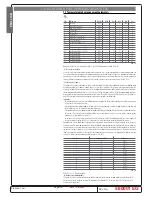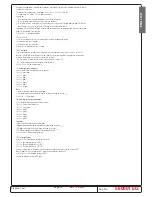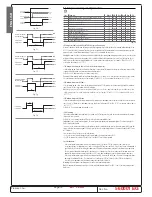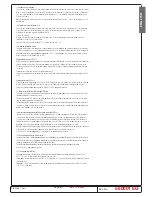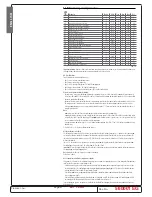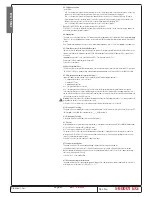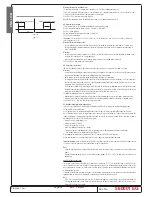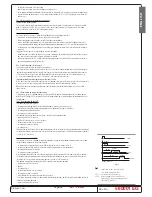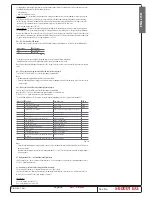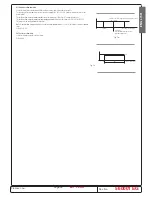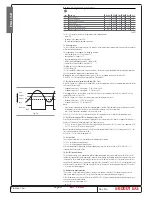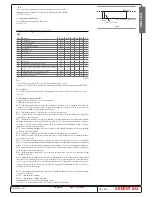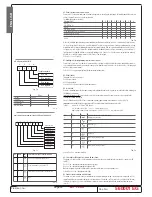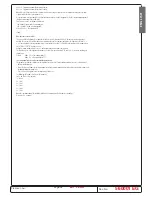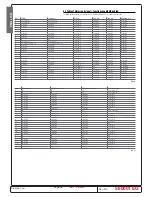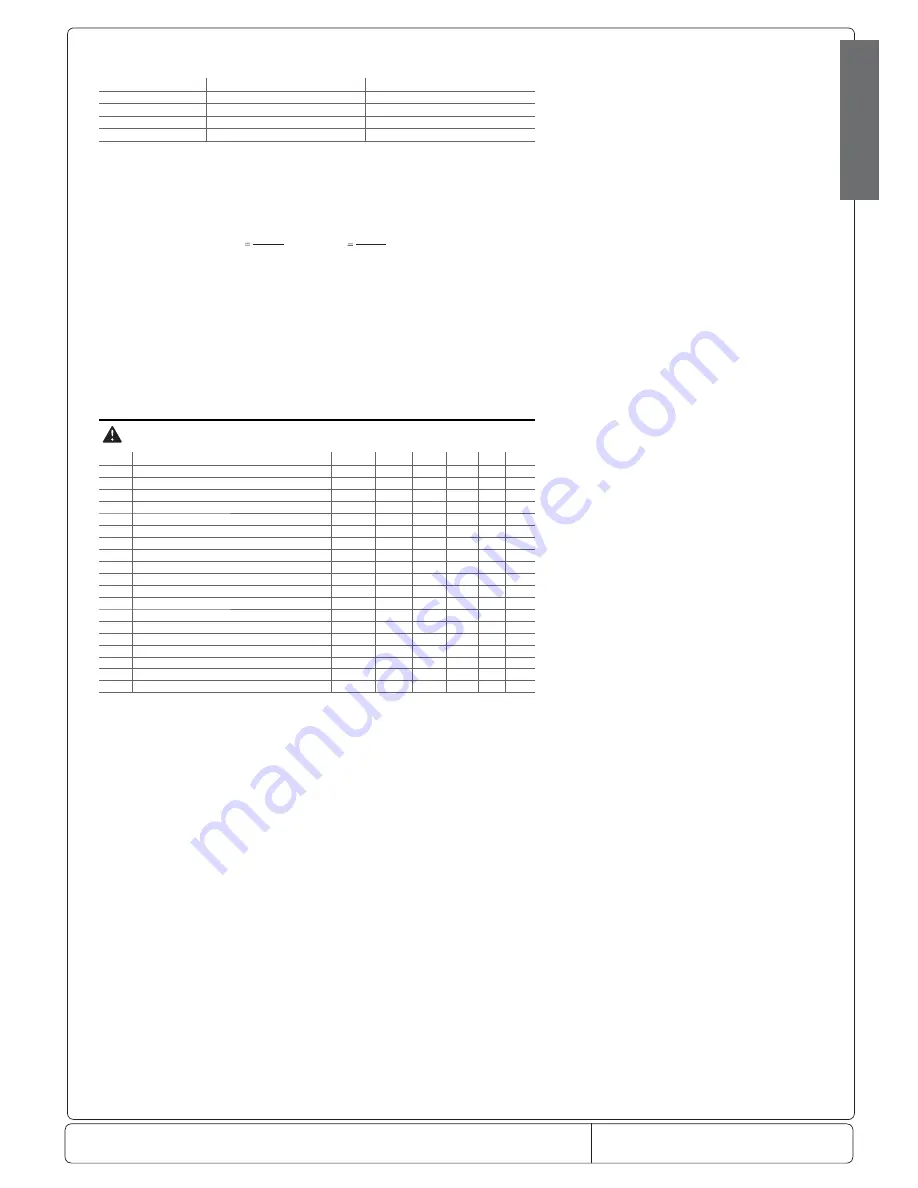
Doc. No.:
560001 EG
Page:24
Ed.1" 08-2014
From ser. no.:
ENGLISH
d12: Advanced auto-adapting defrosts
This parameter is used to enable and disable the advanced defrost function, as per the following table:
d12
Skip defrost
Automatic variation of dI
0
Disabled
Disabled
1
Disabled
Enabled
2
Enabled
Disabled
3
Enabled
Enabled
Tab. 7.f
Default: d12 =0 => Both the functions are disabled.
dn: Nominal defrost duration
This indicates the average duration of the defrost in normal operating conditions. It is expressed as a percentage, with reference to
parameters dP1 and dP2, according to the following formulae:
dn
1
dP
1
100
dn
and
dn
2
dP
2
100
dn
Example: with dn=65, dP1=90 min. and dP2=120 min.
Nominal defrost duration on main evaporator: 59 min.
Nominal defrost duration on auxiliary evaporator: 78 min.
Default: dn=65 => 65% of dP1 or dP2
dH: Proportional factor in the variation of the defrost interval
This parameter is used to increase or decrease the infl uence of the eff ective duration of the defrost, in relation to the nominal
duration, in the algorithm that manages the automatic variation of the defrost interval. By setting dH=0, the eff ective duration has
no infl uence on the duration of the defrost interval. Vice versa, dH = 100 achieves maximum effi ciency. Default: dH=50
7.5 Alarm management parameters
Code
Parameter
Model
UOM
Type
Min
Max
Def.
A0
Alarm and fan diff erential
MSYF
°C/°F
C
0.1
20
2.0
A1
Type of threshold AL and AH
MSYF
fl ag
C
0
1
0
AL
Low temperature alarm threshold
MSYF
°C/°F
F
-50
200
0.0
AH
High temperature alarm threshold
MSYF
°C/°F
F
-50
200
0.0
Ad
Low and high temperature signal delay
MSYF
min
F
0
250
120
A4
Digital input 1 confi guration (DI1)
-SYF
-
C
0
14
0
M---
-
C
0
14
3
A5
Digital input 2 confi guration (DI2)
MSYF
-
C
0
14
0
A6
Stop compressor from external alarm
-SYF
min
C
0
100
0
A7
External alarm detection delay
-SYF
min
C
0
250
0
A8
Enable alarms Ed1 and Ed2
-SYF
fl ag
C
0
1
0
A9
Digital input 3 confi guration (DI3)
-
C
0
14
0
Ado
Light management mode with door switch
MSYF
fl ag
C
0
1
0
Ac
High condenser temperature alarm
-SYF
°C/°F
C
0.0
200
70.0
AE
High condenser temperature alarm diff erential
-SYF
°C/°F
C
0.1
20
5.0
Acd
High condenser temperature alarm delay
-SYF
min
C
0
250
0
AF
Light sensor OFF time
-SYF
sec
C
0
250
0
ALF
Antifreeze alarm threshold
MSYF
°C/°F
C
-50
200
-5.0
AdF
Antifreeze alarm delay
MSYF
min
C
0
15
1
Tab. 7.g
Note:
par. A9 refers to the instruments with 3 digital inputs (ir33DIN, powercompact and MasterCella).
Important warning:
for the set times to become immediately operational, the instrument needs to be turned off and on again. If
this operation is not carried out, timing resumes operation the next time it is used.
A0: Alarm and fan diff erential
This is the diff erential used for disabling high and low temperature alarms (AL and AH - see Figure 7.i) and for managing the fans
(see the F parameters). In the event of an alarm, as can be seen from the fi gure, the value of A0 in part determines the eff ective
activation points of the temperature alarms. Default: A0=2.0 degrees.
A1: Type of threshold AL and AH
Used to select whether the values of parameters AL and AH are considered absolute thresholds or relative to the value of the set point.
A1 = 0 => AL and AH are considered as relative thresholds.
A1 = 1 => AL and AH are considered absolute thresholds.
Default: A1 = 0 => AL and AH are considered relative thresholds.
AL : Minimum temperature alarm
This is used to determine the activation threshold for the low temperature alarm.
Relative threshold for low temperature alarm = (set point) - (value of AL)
AL=0 => Alarm disabled;
Absolute threshold for low temperature alarm = value of AL.
AL=-50 => Alarm disabled.
Important:
If the threshold AL is selected as relative, the value for disabling the alarm is 0, while if selected as absolute, the alarm
disabling value is -50.
Warnings for the relative threshold:
The value of AL does not indicate the actual alarm temperature, but the maximum permissible deviation from the set point; chan-
ging the set point automatically changes the low temperature alarm, while the maximum deviation allowed (=AL ) remains fi xed.
Note:
the low temperature alarm features automatic reset (this means that if the temperature returns above the minimum value
set, the alarm signal is cancelled automatically).






